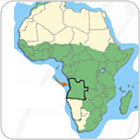Plant breeding programs in Angola
 Angola’s latitude, geology, soil types, altitudes and climates make it appropriate for crops ranging from hot humid tropical to cool temperate. Principal industrial crops are coffee, cotton, sisal and sunflower. Angola’s plant breeding capacity must be viewed in light of the events that followed the country’s independence.
Angola’s latitude, geology, soil types, altitudes and climates make it appropriate for crops ranging from hot humid tropical to cool temperate. Principal industrial crops are coffee, cotton, sisal and sunflower. Angola’s plant breeding capacity must be viewed in light of the events that followed the country’s independence.
Indeed, 25 years of war resulted in the almost total destruction of rural infrastructure and transport systems, a long closure of its universities (including its only Faculty of Agriculture) and the displacement of around one third of a total population of 14 million from their home areas. Angola has had relative peace since 2003, but remains among the ten poorest countries worldwide in terms of socio-economic conditions.
Almost all breeding programmes in Angola are in the public sector research institutions, largely dominated by the Agricultural Research Institute. Some evaluation of local and introduced varieties is carried out on-farm, both with and without the participation of NGOs, such as World Vision, Care and Africare. There is no private sector breeding in Angola.
Line development and evaluation account for more than 70% of Angola’s total plant breeding budget. Maize, roots and tubers, grain legumes and oilseeds are the major target crops.
The dramatically small number of plant breeders is the major issue for Angola’s plant breeding capacity. The general lack of financial resources to carry out experiments in the field and laboratory are also main concerns.
Research and education institutes with activities in plant breeding
 |
Agricultural Research Institute of Angola - Instituto de Investigação Agronómica de Angola (IAA)
|
______________________________________
Information by Elizabeth M. Matos (2005) - Information based on the Angola's full report form the PBBC survey.
Last revised 17-07-2009, GIPB
